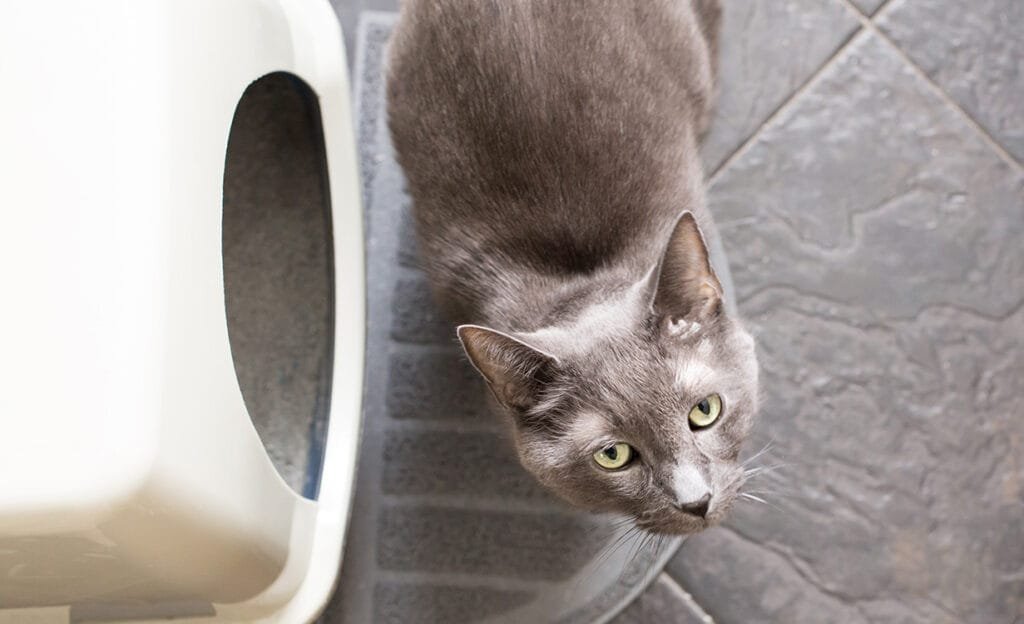There are few things more frustrating for a cat owner than discovering your feline friend has decided the litter box is optional.
Whether it’s the corner of the living room, a laundry basket, or your favorite rug, litter box problems can test the patience of even the most devoted pet parent.
The good news? Your cat isn’t doing this out of spite. Litter box avoidance is your cat’s way of communicating that something isn’t right—physically, emotionally, or environmentally. The key to solving the issue is understanding what your cat is trying to tell you.
Here’s a breakdown of the most common reasons cats stop using the litter box, and how to fix the problem (without losing your sanity).
1. Health Comes First: Rule Out Medical Issues
Before assuming behavioral problems, schedule a vet visit. A surprising number of litter box issues are linked to health conditions, such as:
- Urinary tract infections (UTIs)
- Kidney disease
- Diabetes
- Bladder stones or inflammation
- Arthritis or pain when squatting
Cats in pain may associate the litter box with discomfort and start avoiding it. Some may strain, cry out, or urinate more frequently in small amounts. Others simply look for a more comfortable or accessible place.
Always rule out medical causes first—especially if the behavior is sudden or out of character.
2. Cleanliness Counts: Is the Box Clean Enough?
Cats are incredibly clean animals. If their litter box smells bad, is full of waste, or hasn’t been cleaned recently, they may opt out entirely.
Simple fixes:
- Scoop at least once a day (twice is better in multi-cat households).
- Do a full litter change and wash the box weekly with mild, unscented soap.
- Avoid strong-smelling cleaners or scented litter—what smells “fresh” to you might be overwhelming to your cat.
Bonus tip: If you wouldn’t want to use the litter box, your cat probably doesn’t either.
3. Box Location: Quiet, Safe, and Accessible
Location matters—maybe more than you think.
Cats want to feel safe when they’re doing their business. If the litter box is in a high-traffic, noisy, or hard-to-reach spot, your cat may avoid it altogether.
Ideal litter box placement:
- In a quiet, low-traffic area
- Away from noisy appliances (washer/dryer, furnace)
- Not near their food or water bowls
- Easily accessible—especially for senior or disabled cats
If your cat is older or has mobility issues, avoid placing the box down steep stairs or behind obstacles.
4. Litter Preferences: Texture and Type Matter
Not all litter is created equal—and not all cats like the same kind.
Some cats are picky about:
- Texture (clumping vs. non-clumping, coarse vs. fine)
- Scent (many cats hate perfumed litter)
- Depth (too much litter can be unpleasant for smaller cats)
Try experimenting with different types. Start with unscented, fine-grain clumping litter, which most cats prefer. If you’re switching brands, do it gradually—mix the new with the old over several days to avoid confusion.
5. The Right Box: Size and Style Count
A litter box should be large enough for your cat to comfortably turn around, dig, and bury their waste. Unfortunately, many commercial boxes are too small, especially for adult cats.
Also, consider:
- Covered vs. uncovered: Covered boxes can trap odors and make cats feel trapped or ambushed, especially in multi-cat homes.
- High sides vs. low entry: Older cats or those with mobility issues may struggle with high-sided boxes.
General rule: Bigger is better. If you have multiple cats, provide one box per cat, plus one extra to reduce territorial conflict.
6. Stress and Territory: Emotional Factors Matter
Cats are sensitive creatures. Changes in their environment or routine can trigger litter box avoidance.
Common stressors include:
- New people or pets in the home
- Moving to a new house
- Loud noises or renovations
- Conflict with another cat
In multi-cat households, litter box bullying is a real thing. One cat may block access to the box or intimidate another into avoiding it.
Solutions:
- Provide multiple boxes in different locations.
- Use calming pheromone diffusers (like Feliway) to reduce anxiety.
- Offer safe spaces and vertical territory (cat trees, shelves) for stressed cats.
7. Marking vs. Eliminating: Know the Difference
If your cat is peeing on vertical surfaces (like walls or furniture), they may be marking territory, not just avoiding the box. This behavior is especially common in unneutered males but can occur in any stressed or insecure cat.
Spaying or neutering often reduces marking. Reducing household stress and giving your cat a sense of control over their environment can also help.
8. Don’t Punish—Redirect Instead
It’s tempting to scold a cat after finding a mess outside the box—but punishment doesn’t work. It only increases fear and stress, which can make the problem worse.
Instead:
- Clean thoroughly with an enzyme cleaner** to remove all odors.
- Reinforce positive behavior by rewarding your cat when they use the box.
- Try placing the box near the area they’re soiling, then slowly move it back to a preferred location.
Patience and Observation Are Key
Solving litter box issues takes time, empathy, and detective work. The solution isn’t always obvious, but with a bit of trial and error—and a lot of love—you can restore harmony to your home and happiness to your cat.
Remember: Your cat isn’t being difficult—they’re trying to communicate. When you listen and respond thoughtfully, you strengthen your bond and create an environment where your cat feels safe, clean, and understood.




